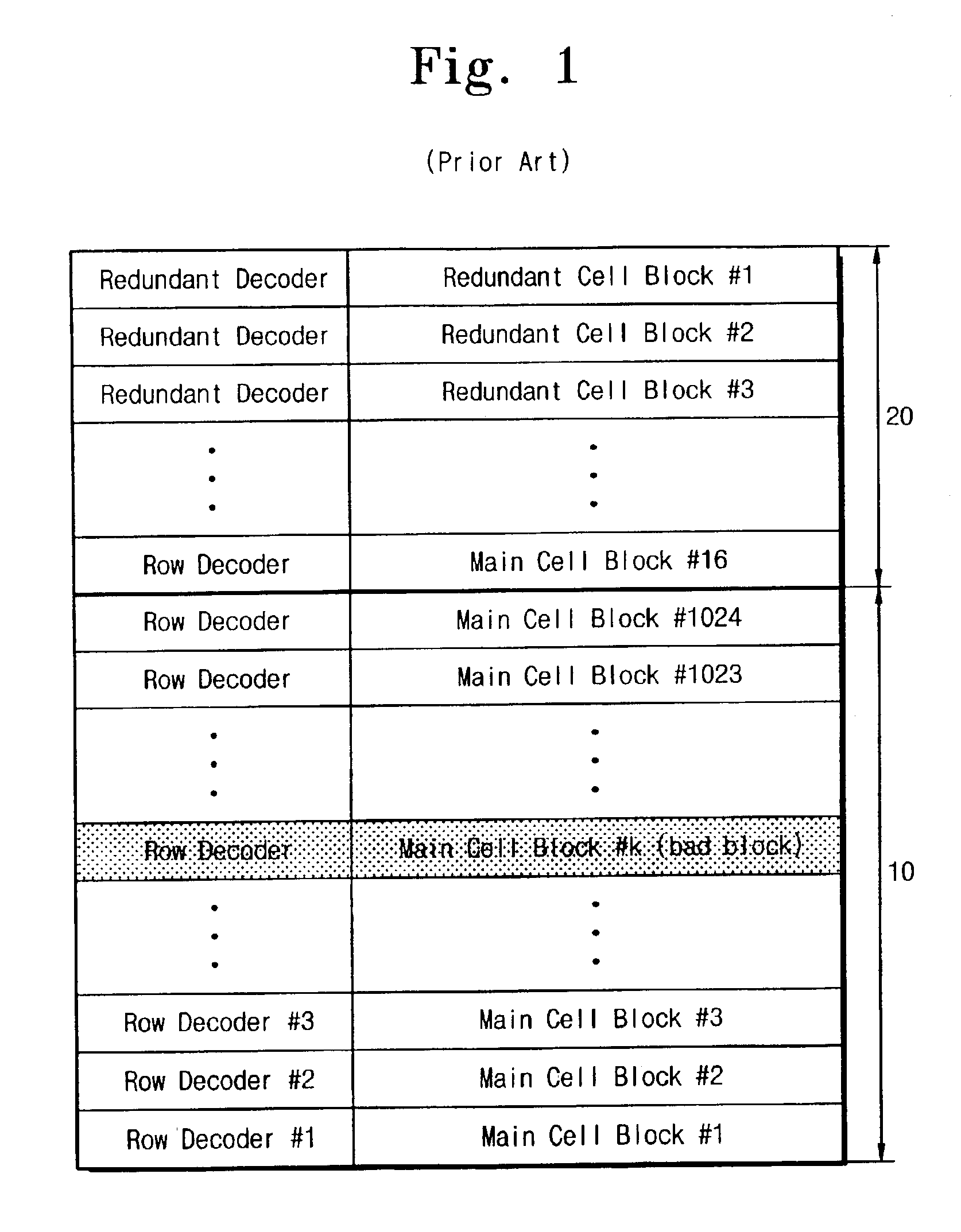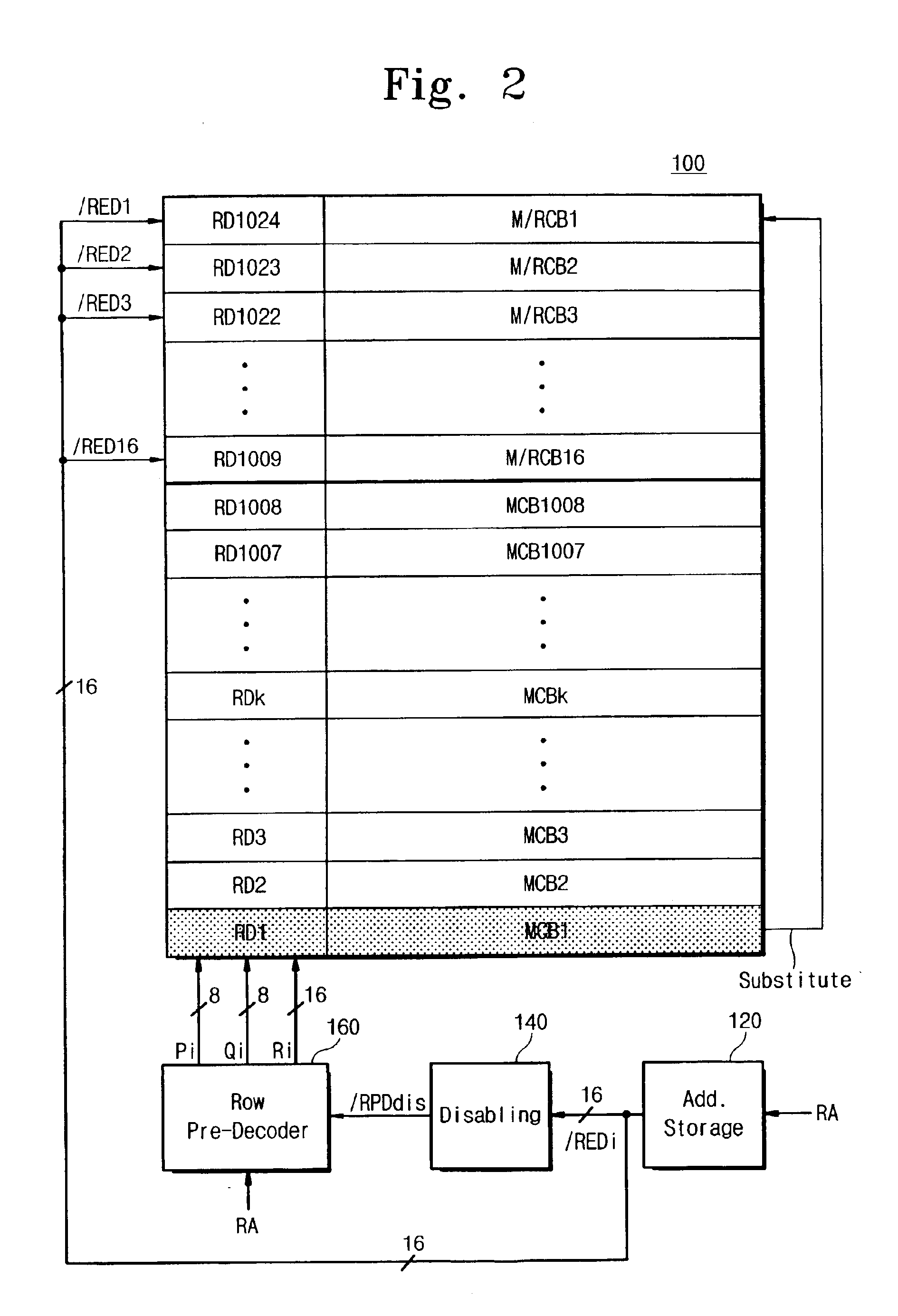Semiconductor memory device with a flexible redundancy scheme
a technology of semiconductor memory and redundancy scheme, which is applied in the direction of digital storage, instruments, computing, etc., can solve the problems of reducing the complexity of manufacturing processes, and the reduction of the product yield of semiconductor devices
- Summary
- Abstract
- Description
- Claims
- Application Information
AI Technical Summary
Benefits of technology
Problems solved by technology
Method used
Image
Examples
Embodiment Construction
[0021]In the following detailed description, several specific details are set forth in order to provide a thorough understanding of the invention. It will be obvious, however, to one skilled in the art that the invention may be practiced without these specific details. Now, practical embodiments of the invention will be explained in conjunction with the drawings. This invention will be described with reference to a FLASH memory device having a NAND-type cell arrangement. However, the invention may also be applied to other memory devices. To accomplish the described objects, the invention provides a semiconductor memory device that includes a number of memory cell blocks, each having memory cell array. The memory cell blocks include first memory cell blocks and second memory cell blocks in which the first memory cell block is assigned to substitute for at least one defective memory cell block found in the second memory cell blocks.
[0022]FIG. 2 is a block diagram of a non-volatile mem...
PUM
 Login to View More
Login to View More Abstract
Description
Claims
Application Information
 Login to View More
Login to View More - R&D
- Intellectual Property
- Life Sciences
- Materials
- Tech Scout
- Unparalleled Data Quality
- Higher Quality Content
- 60% Fewer Hallucinations
Browse by: Latest US Patents, China's latest patents, Technical Efficacy Thesaurus, Application Domain, Technology Topic, Popular Technical Reports.
© 2025 PatSnap. All rights reserved.Legal|Privacy policy|Modern Slavery Act Transparency Statement|Sitemap|About US| Contact US: help@patsnap.com



